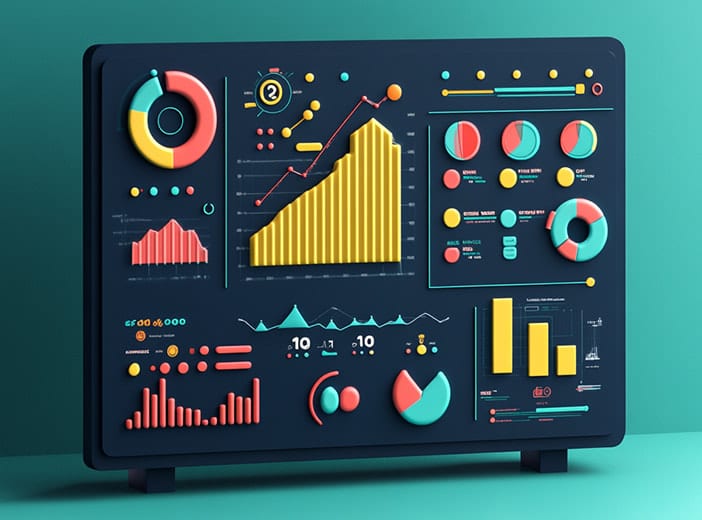What challenges does 2022 hold for data project leaders?

What does 2022 have in store for us in the world of data? How can we help scale up data use, and what advice is there for project leaders within organizations? Jean-Marc Lazard recommends focusing on overcoming three top challenges during the year ahead to enable greater data reuse and unlock its full potential.
Data is at the heart of our economies and our increasingly digitized societies. It is mass-produced in all business sectors – from energy production, manufacturing, consumer goods and transport to infrastructure, public services and more. It is created by all types of organizations, including private companies, central government, and local authorities.
Across the board, data’s value is widely recognized today as a catalyst for improving internal efficiency, creating new services and revenue streams, and building trust with internal and external stakeholders. .
The ongoing challenge, however, is to make this data fully accessible and intelligible so that it is easy for people to reuse and to improve their daily lives, both personally and professionally.
Our November 2021 study conducted with L’Usine Digitale, “The use and promotion of data within organizations in France”*, emphasizes that while the benefits of using data are clearly recognized in organizations, developing this resource on a large scale remains a major challenge.
There are many obstacles in the way of creating compelling data experiences in organizations, including a lack of resources and training, difficulties in fostering a data culture, and a reliance on technology tools that can only be used by experts. Just 50% of the decision-makers we surveyed report that their organization is engaged in making use of data – an issue that is particularly true in large companies.
However, initiatives are gaining ground in all business sectors. Many innovative data projects were launched in 2021. Large organizations, such as Schneider Electric and the BPCE Group, stand out. The public sector is also moving forward with information-based projects that rely on richer and more varied data, increasingly made accessible in an engaging, fun way such as through scannable QR codes or data visualizations.
What does 2022 have in store for us in the world of data? How can we help scale up data use, and what advice is there for project leaders within organizations? I recommend refocusing on three top challenges for 2022 to enable much greater data reuse that unlocks the full potential it holds.
Anticipate and adapt to crises
The organizational benefits of data are widely understood to include time savings, greater internal efficiency, the creation of new services, and improved relationships with stakeholders through transparency and information.
Beyond these advantages, organizations that implement data access projects position themselves as strategic leaders thanks to their ability to better anticipate future challenges and leverage data to drive performance.
Our latest study on data use in organizations shows that 88% of decision-makers identify data as a critical resource for anticipating and solving problems.
This is what two years of the COVID-19 pandemic has taught us. Data-first organizations have adapted more skillfully and have been able to make better decisions within much shorter timeframes. By making their data available, they have given everyone a clear overview of the situation, which never used to happen.
For example, Assurance Maladie decided to use our platform to share vaccination data with the community, and many cities have published information on vaccination centers, case numbers, and more.
We also spent a few weeks working with the French Ministry of Agriculture to create an app for the general public that brings together highly disparate data to help people find food from local producers.
Others were already prepared to share their data. One such example is Véolia, who was able to provide decision-makers and public authorities with data on the presence of COVID in wastewater. This was also the case for SFR, which has presented its geostatistical metrics since 2018 in ways that make them intelligible to customers, whether they are data experts or not, through an easy-to-use data visualization interface. This service has particularly helped those in the mobility and tourism sectors toward a smooth recovery. Each part of the sector can easily draw comparisons to build a competitive strategy. And because data from one problem can be used to solve another, such a tool makes it possible to understand new customer or user behaviors.
All this available data makes it possible to adapt and anticipate what actions to take. From regional or energy data to information from cell phone operators and banks, the resulting data is a gold mine for better understanding sudden changes in individual behaviors and the pandemic’s direct impacts.
And this applies to all types of situations, not just this one. Take the recent cookie regulations, for example. Many organizations that wanted to personalize the experience of online visitors to their website found themselves up against it due to a sudden lack of information, directly impacting on their business. Those who were already using their data were able to take advantage by relying on contextual data (internal data, public data, or data from other organizations) to better understand their customers and make a difference.
As a data project leader, making data available to employees and other stakeholders means preparing your organization to adapt to any situation. This both delivers competitive advantage and builds confidence with your employees, customers, and partners.
Prepare tomorrow's organizations and welcome new talent
The organizations of tomorrow depend not only on the ability to manage crisis situations, but also on the talent within the organization. We all consume a lot of information online in our personal and professional lives, information that is provided in a way that is simple, immediate, and directly actionable. But the same is not yet true when it comes to self-service data. Data and information are still not immediately and effortlessly accessible and intelligible.
However, data availability presents a major opportunity to attract talent and new generations of employees. Joining a data-driven company guarantees transparent collaboration, as well as underpinning the principle of test & learn, which is central to the culture of digital natives. This is a must for organizations seeking to retain or attract talent, as set out a recent article in the McKinsey Quarterly, by Aron De Smet, Bonnie Dowling, Marino Mugayar-Baldocchi, and Bill Schnaninger, titled Great Attrition or Great Attraction? The choice is yours (September 2021).
The authors’ research underlines the extent to which employees need to feel valued by their organization and managers, above and beyond their salary, benefits, and perks. They don’t want “transactions” but interactions and meaning—and not necessarily in person!
This is a challenge that data project leaders can address right now in their organization. Offering simplified access and an immediate data experience allows employees to have better interactions with each other and with their managers, forging working relationships based on new, reliable, and directly actionable information that makes day-to-day life easier for everyone in organizations. Providing employees with the necessary resources to create and/or access data experiences strengthens transparency, improves efficiency, and offers valuable information for all, improving cooperation and giving meaning to professional relationships. Today, this is one of the top priorities of employees in large public and private organizations.
In addition, the business benefits can be substantial. SNCF Réseau, for example, estimates an annual savings of €10M due to the impact of making business data available internally for everyone.
To achieve this level of openness in data, a profound change is necessary at the organizational level. Teams must be trained to understand the value of a data-driven organization and how it operates. And by training, I am not necessarily referring to an increase in technical skills, since the goal is not to fill organizations with data scientists. Instead, I’m referring to putting data within everyone’s reach. Therefore, it is much more a matter of raising awareness of data’s potential and providing training on open tools and the data culture that this entails.
Helping build a data-driven world that transforms daily lives
Finally, this data culture must extend to everyone. Each organization has a role to play and a responsibility to anticipate and respond to economic, societal, and environmental challenges. Data cannot remain an expert-level subject. It must be something that each and every one of us can consume effortlessly in our daily lives through any channel, just like any other type of information.
Organizations must help make data equally consumable and encourage the creation of simple, accessible, and memorable data experiences.
We can easily imagine that, in the span of just ten years, data will have completely transformed people’s daily lives. This is already the case today with many cities making data accessible where it was not before. For example, the city of Orléans and the Canton of Basel are incorporating data in their public gardens so that visitors can scan QR codes on trees to instantly bring up related information.
It’s not just happening in the public sector, and this is where things get really interesting. More and more private companies are using open data to communicate with the aim of improving transparency and enriching people’s lives through data. The BPCE Group is a pioneer in its sector, and we are working with their teams to make data more accessible.
To meet this challenge, each organization must have access to a tool for opening and sharing their data. Such a tool makes data accessible for everyone to use. This is still rarely the case today in organizations, even though it is common for them to have data lakes and other “data expert” tools.
This is one of the biggest obstacles facing data project leaders in 2022. By adding this open data component to their technology stack, organizations will be able to modernize how they use data and tackle innovative projects in record time. It is an essential jumping-off point for making your investments in expert tools profitable and for continuing to create value day in and day out.
A final example that gives us a glimpse into the future of data in organizations involves our client Elia, which operates Belgium’s electrical power transmission network. Elia has positioned ODS as the standard “data self-service” component of its digital platform, a key building block to complete its data storage, processing, and analysis solutions, and to rapidly develop its digital services.
To sum it up, 2022 will be a pivotal year for ramping up the use of data in all sectors. Data is already being produced and stored in enormous volumes by organizations. Now, it’s a matter of sharing that data so that anyone can reuse it. The benefits have already been demonstrated, and the field of possibilities remains largely underexploited.
At Opendatasoft, our goal is to support this paradigm shift and help all organizations that are storing data without actually enabling its reuse. Wherever data remains confined to experts, we want to make that data accessible to all and contribute to a world where data improves everyone’s daily lives.
* Opendatasoft x L’Usine Digitale quantitative study, carried out online over the period from 10/04/2021 to 10/31/2021, with a sample of 202 decision-makers from the banking, finance, insurance, retail, energy, manufacturing, public administration, local authorities, services, and transportation sectors.

In an increasingly data-driven world, understanding the differences between data, metadata, data assets, and data products is essential to maximizing their potential. This is because these interrelated yet distinct concepts each play a key role in driving digital transformation by facilitating data sharing and consumption at scale.

Organizational silos prevent data sharing and collaboration, increasing risk and reducing efficiency and innovation. How can companies remove them and ensure that data flows seamlessly around the organization so that it can be used by every employee?

